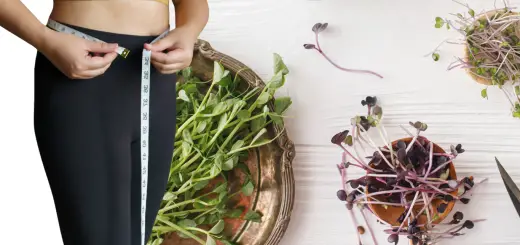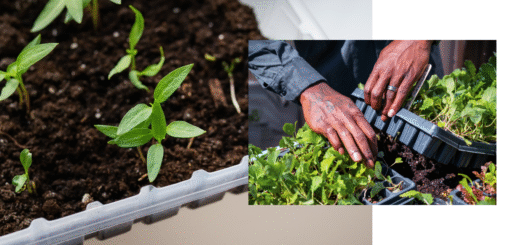Microgreens tea: a new way to incorporate them into our daily lives. Challenges and possibilities.

Hi everyone, we’re back with a new article where we once again explore different ways to include microgreens in our diets. We’ve already seen countless nutritious and delicious options such as salads, sandwiches, toasts, pasta dishes, and even juices and smoothies, either blended or whole.
In today’s article, we’ll explore a new way to integrate our tiny friends into our daily routine: microgreens tea. We’ll look into what is currently known about preparing them as an infusion, their potential benefits, and the challenges involved.
The idea of turning them into tea presents a new opportunity to take advantage of their compounds, introduce them in a more digestible liquid format, and explore new flavor experiences.
Let’s take a look!
Considerations for preparing microgreens tea
• Drying or using fresh: To maximize compound extraction, it’s recommended to use dried or partially dehydrated microgreens.
• Temperature and infusion time: According to some guides, when combining microgreens with traditional tea (black, green, or white), the infusion time varies between 3 and 5 minutes; if using only microgreens, without any other tea, 10 to 15 minutes is recommended.
• Water to microgreens ratio: About one teaspoon of dried microgreens per cup of water is suggested.
Health benefits of microgreens tea
• Better assimilated mineral content. For example, a study with lemon balm microgreens found that the infusion contained more calcium, potassium, magnesium, phosphorus, copper, and zinc than the mature plant.
• Presence of antioxidants, polyphenols, and other bioactive compounds that could have protective effects against chronic diseases.
• An alternative way of consumption, more accessible for people who don’t usually eat large amounts of vegetables.
Current challenges
It’s important to note that, although these findings are promising, there are still no clinical studies that directly prove that microgreens infusions produce the same effects as consuming them fresh.
Likewise, not all compounds present in microgreens can be effectively extracted with hot water, limited steeping times, or varying blends. Additionally, some bioactive compounds may degrade due to heat or oxidation.
Future possibilities
Despite these challenges, we can anticipate that in the coming years more clinical studies will emerge evaluating the effects of consuming microgreens infusions on health.
We can also expect the development of commercial “microgreens tea” products standardized in dosage, quality, and flavor, or even hybrid blends that combine microgreens with traditional teas (green, white, etc.) to enhance both flavor and functionality.
It will also be crucial to optimize drying, extraction, and presentation methods to preserve as many beneficial compounds from microgreens as possible.
In conclusion, although much progress is still needed to retain all the properties of microgreens in tea form, the idea is very promising. Without a doubt, microgreens tea opens a new door to culinary innovation and well being.
See you in the next article as we continue discovering new ways to unlock the full potential of microgreens!
Carlota
Sources
Cleveland Clinic. (2023, July 7). Why you should eat microgreens. Health Essentials. Retrieved from https://health.clevelandclinic.org/benefits-of-microgreens
Janette & Jesper. How Do You Make Microgreen Tea? Microgreens Corner. Retrieved from https://www.microgreenscorner.com/how-to-make-microgreen-tea/
Neves, A. How to Make the Perfect Cup of Microgreens Tea in 6 Steps. Microgreens World. Retrieved from https://microgreensworld.com/microgreens-tea-in-6-steps/
Newman, R. G., Moon, Y., Tou, J. C., McManus, T., & Waterland, N. L. (2023). Harvest stage and brewing conditions impact mineral content, phenolic compounds, and antioxidant capacity of lemon balm (Melissa officinalis L.) herbal tea. Plant Foods for Human Nutrition, 78(2), 336–341. https://pubmed.ncbi.nlm.nih.gov/36971946/
Tallei, T. E., et al. (2024). A comprehensive review on the antioxidant activities and health implications of microgreens. International Journal of Food Science & Technology, 59(1), 58–??. https://academic.oup.com/ijfst/article/59/1/58/7807901
Vučetić, A., Šovljanski, O., Pezo, L., Gligorijević, N., Kostić, S., Vulić, J., & Čanadanović-Brunet, J. (2025). A comprehensive antioxidant and nutritional profiling of Brassicaceae microgreens. Antioxidants, 14(2), 191. https://pubmed.ncbi.nlm.nih.gov/40002378/







